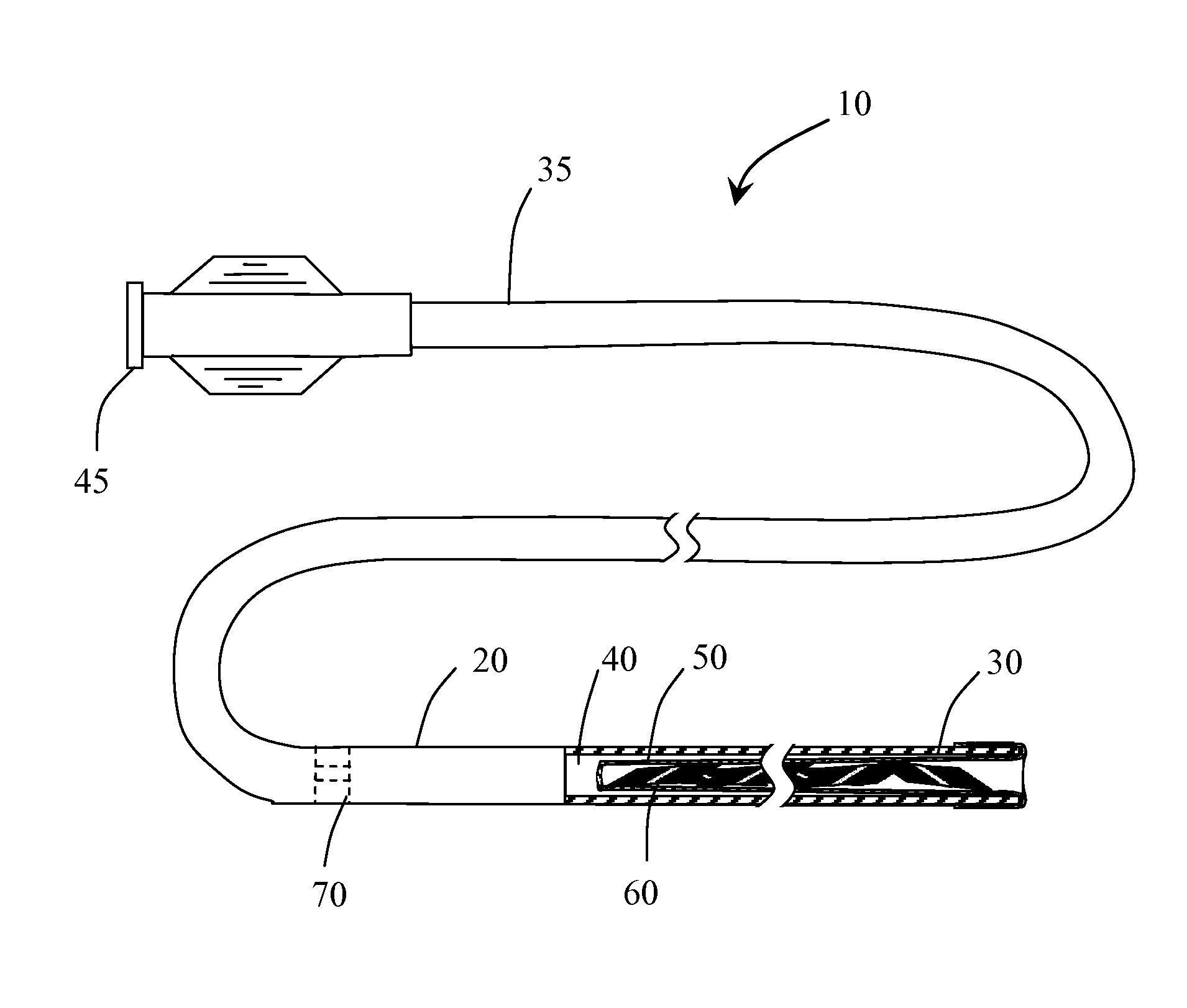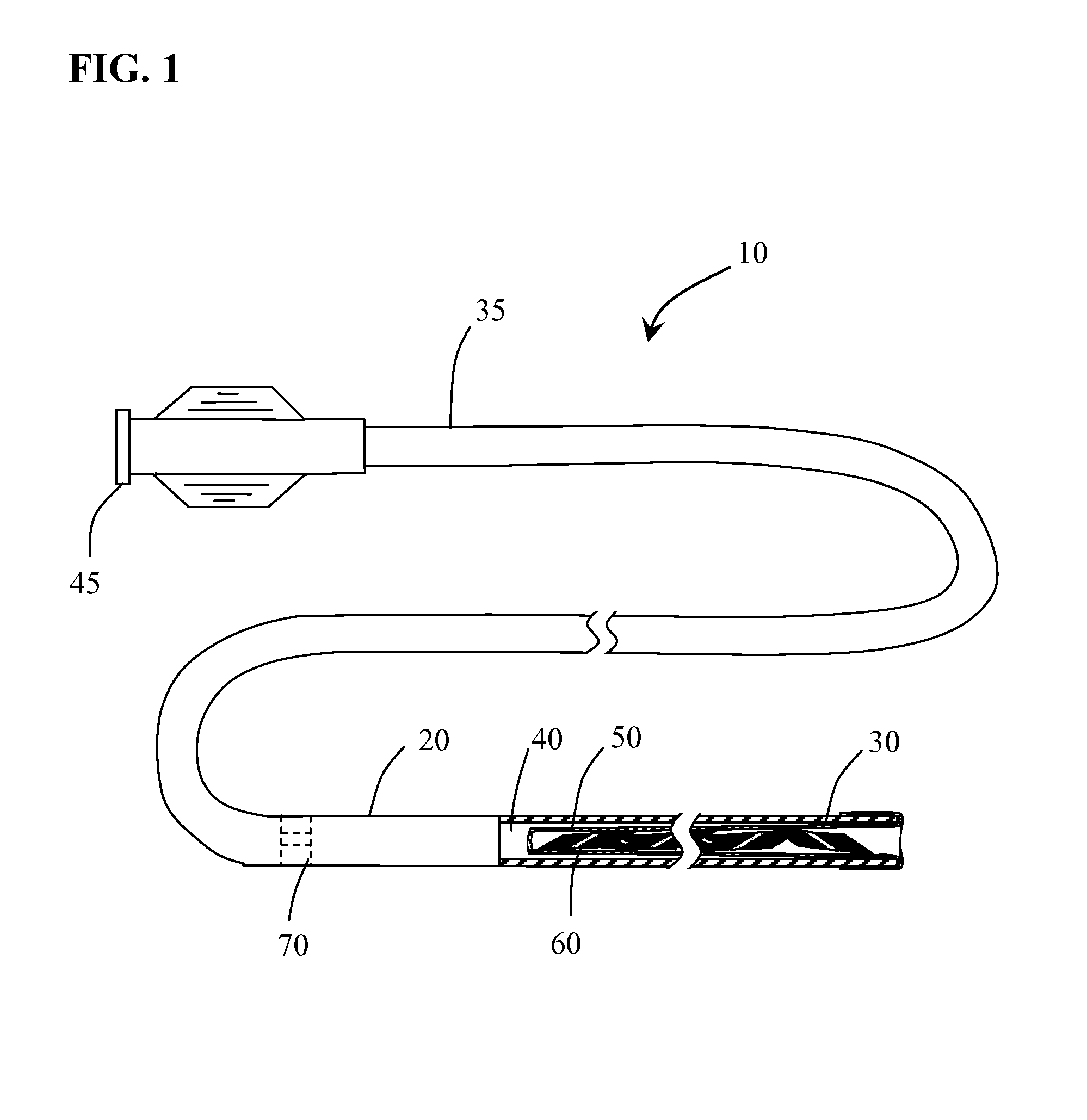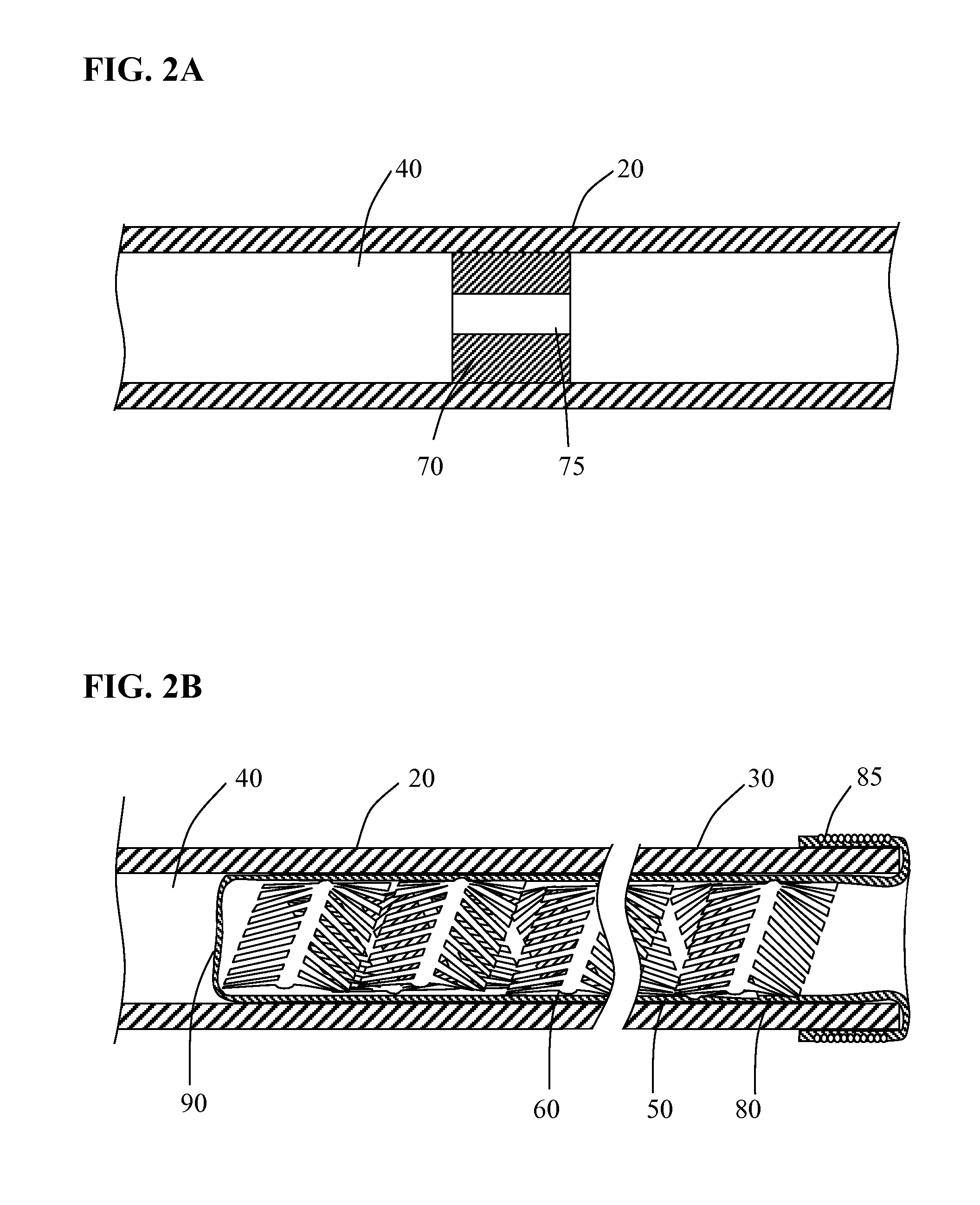Systems for performing intralumenal reconstruction
a technology of intralumenal reconstruction and lumenectomy, which is applied in the field of intralumenal therapy for the treatment of vascular disease states, can solve the problems of long-term recanalization of aneurysms, hemorrhagic stroke, and symptomatic neurological deficits
- Summary
- Abstract
- Description
- Claims
- Application Information
AI Technical Summary
Benefits of technology
Problems solved by technology
Method used
Image
Examples
Embodiment Construction
[0028]Methods and systems for performing vascular reconstruction and revascularization in a desired area of the body are herein described. FIG. 1 illustrates a medical device deployment system 10 suitable for use with embodiments of the present invention. Deployment system 10 includes an elongate tubular catheter 20 having distal and proximal ends 30 and 35 respectively and a through lumen 40 providing fluid communication between the catheter proximal hub 45 and balloon 50 which is everted and positioned within lumen 40 at distal end 30. While catheter 20 is shown having a single lumen 40 it should be understood that catheter 20 may incorporate additional lumens as needed. For instance catheter 20 may be formed from a dual lumen extrusion in which one lumen is used for coupling to balloon 50 and the second lumen to facilitate use of a guidewire for navigating the catheter to a target site. Alternatively, the second lumen may not extend the full length of the catheter and may only be...
PUM
 Login to View More
Login to View More Abstract
Description
Claims
Application Information
 Login to View More
Login to View More - R&D
- Intellectual Property
- Life Sciences
- Materials
- Tech Scout
- Unparalleled Data Quality
- Higher Quality Content
- 60% Fewer Hallucinations
Browse by: Latest US Patents, China's latest patents, Technical Efficacy Thesaurus, Application Domain, Technology Topic, Popular Technical Reports.
© 2025 PatSnap. All rights reserved.Legal|Privacy policy|Modern Slavery Act Transparency Statement|Sitemap|About US| Contact US: help@patsnap.com



